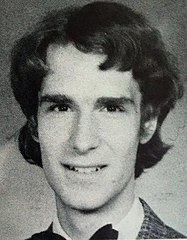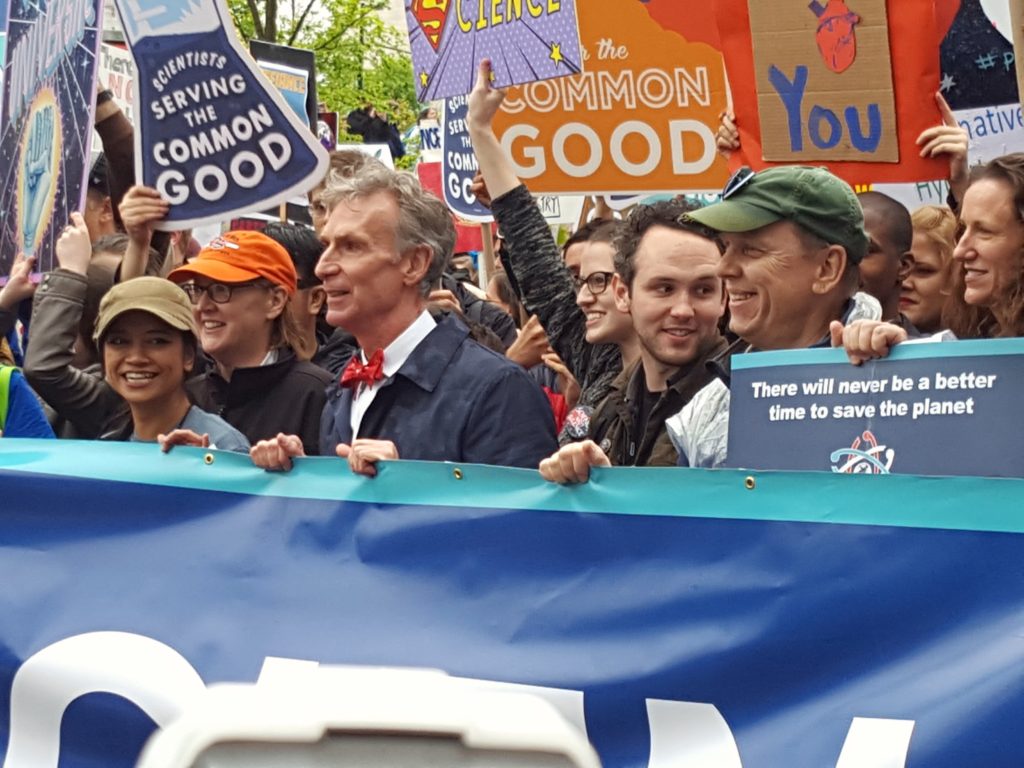I’ll say a phrase, and you say the first thing that comes into your mind. I say, “Bill Nye,” and you say what? The Science Guy, duh! But we might just as well answer, the Environment Guy. Whatever you call him, he’s our guy for today.

Bill Nye—or William Sandford Nye, as he parents named him—was born on November 27, 1955. He had an early penchant for science—and humor. He said, “My family is funny. I mean funny in the sense that we make people laugh, not just funny looking.” After he graduated from Cornell with a degree in mechanical engineering, he moved to Seattle to work as an engineer for Boeing. He say, “I’ve always loved airplanes and flight. There’s a hydraulic resonance suppressor ‘Quinke’ tube on the 747 horizontal stabilizer drive system that I like to think of as my tube.”
That sort of humor spawned his second career. While working as an engineer during the day, Nye began doing stand-up comedy in the evenings. He called into a live Seattle television show one afternoon to correct the host’s pronunciation of “gigawatts.” Soon after, he was a regular, answering science questions and cracking jokes. That’s where he earned the name “Bill Nye the Science Guy.”
And that’s how most of us got to know Bill Nye. His PBS television show about science aired for five years in the 1990s. The show sought to de-mystify science in a light-hearted manner, along the way earned 7 Emmys for Nye and 18 overall for the show.
Nye believes that science is of essential importance to sustaining life on earth, and his messages have focused more recently on combating climate change. He rebukes the claims that one doesn’t need to believe science or scientists. “You can’t chose to believe in gravity; if you walk off a cliff, you will be affected adversely. Climate change is not a 50-50 thing which you can choose to believe or not. If you choose to ignore human’s influence on the world’s climate, we will be affected adversely.” And he walks the talk—he competes with his friend and neighbor, Ed Begley, to see whose home is more sustainable. He has installed solar power, solar hot water, and a water-saving garden in his home (but I don’t know who is winning).

His more recent Netflix show, “Bill Nye Saves the World,” reflected that more serious side of his mission. “I don’t think of it as educational so much as thought provoking,” he said. “It’s science with an opinion. We hope to give our viewers a scientific perspective on global issues.” Nye was co-chair of the global March for Science in 2017, and he protested outside the White House when President Trump withdrew the US from the Paris Climate Accords.
We can expect Bill Nye to keep up his assault on those who would deny science and deny climate change. He says, “Climate change is bigger than I am; it’s bigger than you are. I’m sorry, peple, you can shoot the messenger but the climate is still changing.”
References:
BillNye.com. Bill Nye biography. Available at: https://billnye.com/resources/Bill-Nye-bio-2018.pdf. Accessed November 26, 2019.
Sayej, Nadja. 2017. Bill Nye: ‘You can shoot the messenger but climate is still changing.’ The Guardian, 25 Jul 2017. Available at: https://www.theguardian.com/books/2017/jul/25/bill-nye-the-science-guy-climate-change-books-netflix. Accessed November 26, 2019.
